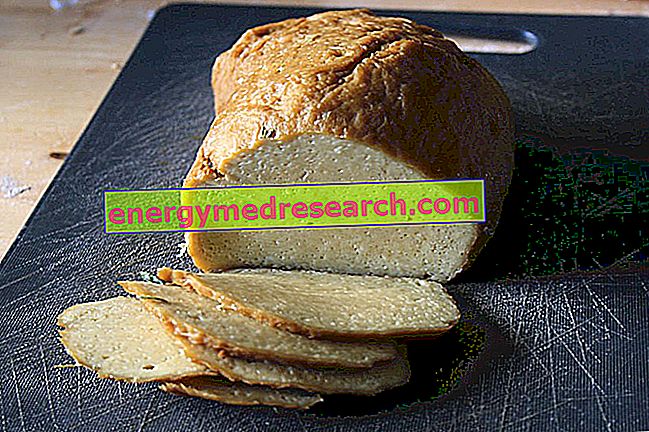Essential oils
When we talk about “macassar” in the herbal-cosmetic field, we immediately refer to the homonymous oil extracted from Cananga odorata, a plant from which the well-known ylang ylang oil is also obtained.
The names attributed to the two oils - macassar and ylang ylang - are often used improperly in the common language, exchanging them for synonyms; indeed, considering that both are extracted from the same matrix, it is understandable that there is some confusion in this regard. This brief argument aims to provide some clarity on the subject, illustrating the distinctive features of both.

Before describing the salient properties and the chemical constituents that characterize each of the two oils, a brief analysis of the matrix, Cananga odorata, is a must .
Cananga odorata
As we have mentioned, the flowers of Cananga odorata (Family: Annonaceae) represent the starting matrix from which the oil of ylang ylang and that of macassar are extracted.
The Cananga odorata tree , typical of the Comoros Islands, is commonly called with the same name as the prized extracted oil (ylang ylang), while the plant assumes a different popular connotation in the Indonesian countries (canang). Cananga odorata is a tropical tree species that does not go unnoticed, given its impressive size (it reaches even 35-40 meters in height): it has a branched and erect stem, originating a rather thick crown, consisting of large, persistent and alternate leaves, with a small thin petiole. The flowers, which bloom in intermediate seasons, have very elongated petals, with a particular yellow-greenish color: the flowers are distinguished, in particular, by the intense and penetrating scent; it is from the flowers that the oil of ylang ylang and macassar is extracted.
Macassar: generalities
The testimonies on the use of macassar oil date back to the Victorian era: in those years, the main use of this oil consisted in the formulation of balms and shampoos with nourishing and softening properties. Indeed, this ancient custom is still considered in modern herbal shops: hair products formulated with macassar oil are indicated to reinvigorate, energize and give body to brittle and thin hair, nourishing and hydrating them. The final effect of constant and frequent washing with macassar oil based shampoo is surprising and the hair will enjoy a profound restructuring.
However, the use of macassar oil does not stop only with hair products: it is often used, in fact, as a base for male perfumes, with a violet-like "cuoiosa" note. In a similar way, this oil becomes part of many fragrant formulations of soap, shower gel, shaving foam etc., often associated with other oils that enhance the final effect (eg jasmine oil, castoreum oil).
In phytotherapy, macassar oil is used internally for sedative and antispasmodic properties; topical application of macassar oil in the form of creams, ointments or massage oils is used for anti-inflammatory, antiparasitic and euphoric use.
Macassar: essential oil
As we have seen, what distinguishes macassar oil from ylang ylang oil is its chemical composition, as well as the combination of chemical molecules constituting the final character of the phytocomplex. The matrix from which the oils are obtained is the same: from the flowers of Cananga odorata a very fragrant essence is obtained, subsequently subjected to four different distillations. The four extraction processes reflect on the final quality of the distillate: in this regard, the "extra", "first", "second" and "third" (in order of quality) distillations are distinguished. Macassar oil cannot be obtained from "extra" distillation (an extraction technique reserved for ylang ylang oil).
Macassar oil has a golden yellow or reddish color, a viscous consistency and gives off a fragrance very similar to that of jasmine. The essence is as follows (in descending order by quantity):
- linalool
- P-cresol-methyl-ether
- Geranyl benzoate
- geranyl
- Organic acids, yaligene, phenylpropanoids
[compositive analysis from the Ragionic Dictionary of herbal medicine and phytotherapy, by A. Bruni, M. Nicoletti]
The application of macassar oil could be irritating on particularly delicate skin.
Ylang ylang: generalities
Precisely because of the chemical composition that characterizes the phytocomplex, the essence of ylang ylang extracted from the flowers of Cananga odorata is much more valuable than the macassar. Also in this case, the essential oil is obtained by steam distillation: in general, the purification process takes more than 24 hours.
The ylang ylang oil is intense, penetrating, distinguished by a characteristic balsamic note: as reported by the etymological analysis of the term ylang ylang (from ilang-ilang, “uncommon” referred to the very particular and distinguishable aroma), the fragrance of the essence is exclusive and original.
The ylang ylang oil is presented as a rather viscous and yellowish liquid, with a very complex chemical composition; it is in fact made up of over a hundred different molecules: linalool (above all), geranyl acetate / benzoate, P-cresol-methyl ether, ylangenes, phenylpropanoids and many other specific compounds.
Ylang ylang: uses
The essential oil is particularly indicated for "relaxing, relaxing, calming, loosening and unblocking" the body, muscles, anxieties, tension and stress: not surprisingly, ylang-ylang oil is widely used as a massage oil . Furthermore, it seems that its medicinal virtues are particularly indicated in case of palpitations, tachycardia, hypertension and anxiety (aromatherapy).
The precious essential oil of Cananga odorata is also known as antiseptic, euphoric and regenerating; some dare to attribute it also marked - though still hypothetical - aphrodisiac properties.
In phytotherapy, ylang ylang oil is exploited for its antispasmodic, hypoglycemic, hypotensive, antiparasitic and antidepressant properties.
Macassar and Ylang Ylang: summary of properties »



